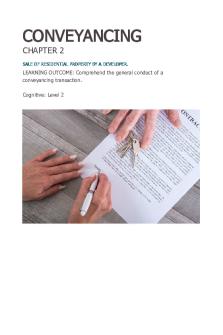Discover-large - Lecture notes 2 PDF

| Title | Discover-large - Lecture notes 2 |
|---|---|
| Author | Anonymous User |
| Course | Civil Procedure |
| Institution | University of Chicago |
| Pages | 129 |
| File Size | 1.6 MB |
| File Type | |
| Total Downloads | 116 |
| Total Views | 140 |
Summary
Notes...
Description
STUDY GUIDE
Discover Canada The Rights and Responsibilities of Citizenship
LARGE PRINT
2 !
The Oath of Citizenship I swear (or affirm) That I will be faithful And bear true allegiance To Her Majesty Queen Elizabeth the Second Queen of Canada Her Heirs and Successors And that I will faithfully observe The laws of Canada Including the Constitution Which recognizes and affirms The Aboriginal and treaty rights of First Nations, Inuit and Métis peoples And fulfil my duties As a Canadian citizen. Le serment de citoyenneté Je jure (ou j’affirme solennellement) Que je serai fidèle Et porterai sincère allégeance À Sa Majesté La reine Elizabeth Deux Reine du Canada À ses héritiers et successeurs Que j’observerai fidèlement Les lois du Canada Y compris la Constitution Qui reconnaît et confirme les droits Ancestraux ou issus de traités Des Premières Nations, des Inuits et des Métis Et que je remplirai loyalement Mes obligations De citoyen canadien.
3
Understanding the Oath In Canada, we profess our loyalty to a person who represents all Canadians and not to a document such as a constitution, a banner such as a flag, or a geopolitical entity such as a country. In our constitutional monarchy, these elements are encompassed by the Sovereign (Queen or King). It is a remarkably simple yet powerful principle: Canada is personified by the Sovereign just as the Sovereign is personified by Canada. © Her Majesty the Queen in Right of Canada, represented by the Minister of Citizenship and Immigration Canada, 2021 Ci1-11/2021E-PDF-1 978-0-660-39274-5
4
Message to Our Readers Welcome! It took courage to move to a new country. Your decision to apply for citizenship is another big step. You are becoming part of a great tradition that was built by generations of pioneers before you. Once you have met all the legal requirements, we hope to welcome you as a new citizen with all the rights and responsibilities of citizenship. Canada has welcomed generations of newcomers to our shores to help us build a free, law-abiding and prosperous society. For 400 years, settlers and immigrants have contributed to the diversity and richness of our country, which is built on a proud history and a strong identity. Canada is a constitutional monarchy, a parliamentary democracy and a federal state. Canadians are bound together by a shared commitment to the rule of law and to the institutions of parliamentary government. Canadians take pride in their identity and have made sacrifices to defend their way of life. By coming to Canada and taking this important step toward Canadian citizenship, you are helping to write the continuing story of Canada. Immigrants between the ages of 18 and 54 must have adequate knowledge of English or French in order to become Canadian citizens. You must also learn about voting procedures, Canada’s history, symbols, democratic institutions, geography, and the rights and responsibilities of citizenship. 5 !
Canadian citizens enjoy many rights, but Canadians also have responsibilities. They must obey Canada’s laws and respect the rights and freedoms of others. This guide will help you prepare to become a Canadian citizen. Good luck! For information about Citizenship and Immigration Canada, visit our website at www.cic.gc.ca.
6
Contents Applying for Citizenship.........................................................8 Rights and Responsibilities of Citizenship...........................11 Who We Are ........................................................................16 Canada’s History .................................................................23 Modern Canada...................................................................45 How Canadians Govern Themselves ..................................54 Federal Elections.................................................................60 The Justice System .............................................................75 Canadian Symbols ..............................................................78 Canada’s Economy .............................................................90 Canada’s Regions ...............................................................93 The Atlantic Provinces.................................................96 Central Canada ...........................................................98 The Prairie Provinces ................................................100 The West Coast.........................................................102 The Northern Territories ............................................103 Study Questions ................................................................106 For More Information.........................................................111 Authorities .........................................................................122 Memorable Quotes …………………………………………...128
7 !
Applying for Citizenship When you apply for citizenship, officials will check your status, verify that you are not prohibited from applying, and ensure that you meet the requirements. Your application may take several months. Please ensure that the Call Centre always has your correct address while your application is being processed. See page 111 for telephone numbers. Picture: Citizens take the oath HOW TO USE THIS BOOKLET TO PREPARE FOR THE CITIZENSHIP TEST This booklet will help you prepare for the citizenship test. You should: • Study this guide; • Ask a friend or family member to help you practise answering questions about Canada; • Call a local school or school board, a college, a community centre or a local organization that provides services to immigrants and ask for information on citizenship classes; 8 !
• Take English or French language classes, which the Government of Canada offers free of charge. ABOUT THE CITIZENSHIP TEST The citizenship test is usually a written test, but it could be an interview. You will be tested on two basic requirements for citizenship: 1) knowledge of Canada and of the rights and responsibilities of citizenship, and 2) adequate knowledge of English or French. Adult applicants 55 years of age and over do not need to write the citizenship test. The Citizenship Regulations provide information on how your ability to meet the knowledge of Canada requirement is determined. Information about this requirement can be found on page 64 of the study guide. All the citizenship test questions are based on the subject areas noted in the Citizenship Regulations, and all required information is provided in this study guide. AFTER THE TEST If you pass the test and meet all the other requirements, you will receive a Notice to Appear to Take the Oath of Citizenship. This document tells you the date, time and place of your citizenship ceremony.
9
At the ceremony, you will: • Take the Oath of Citizenship; • Sign the oath form; and • Receive your Canadian Citizenship Certificate. If you do not pass the test, you will receive a notification indicating the next steps. You are encouraged to bring your family and friends to celebrate this occasion.
10 !
Rights and Responsibilities of Citizenship Canadian citizens have rights and responsibilities. These come to us from our history, are secured by Canadian law, and reflect our shared traditions, identity, and values. Canadian law has several sources, including laws passed by Parliament and the provincial legislatures, English common law, the civil code of France and the unwritten constitution that we have inherited from Great Britain. Together, these secure for Canadians an 800-year old tradition of ordered liberty, which dates back to the signing of Magna Carta in 1215 in England (also known as the Great Charter of Freedoms), including: • Freedom of conscience and religion; • Freedom of thought, belief, opinion and expression, including freedom of speech and of the press; • Freedom of peaceful assembly; and • Freedom of association. Habeas corpus, the right to challenge unlawful detention by the state, comes from English common law.
11 !
The Constitution of Canada was amended in 1982 to entrench the Canadian Charter of Rights and Freedoms, which begins with the words, “Whereas Canada is founded upon principles that recognize the supremacy of God and the rule of law.” This phrase underlines the importance of religious traditions to Canadian society and the dignity and worth of the human person. The Charter attempts to summarize fundamental freedoms while also setting out additional rights. The most important of these include: • Mobility Rights — Canadians can live and work anywhere they choose in Canada, enter and leave the country freely, and apply for a passport. • Aboriginal Peoples’ Rights — The rights guaranteed in the Charter will not adversely affect any treaty or other rights or freedoms of Aboriginal peoples. • Official Language Rights and Minority Language Educational Rights — French and English have equal status in Parliament and throughout the government. • Multiculturalism — A fundamental characteristic of the Canadian heritage and identity. Canadians celebrate the gift of one another’s presence and work hard to respect pluralism and live in harmony. Picture: Queen Elizabeth II proclaiming the amended Constitution, Ottawa, 1982 12 !
The Equality of Women and Men In Canada, men and women are equal under the law. Canada’s openness and generosity do not extend to barbaric cultural practices that tolerate spousal abuse, “honour killings,” female genital mutilation, forced marriage or other gender-based violence. Those guilty of these crimes are severely punished under Canada’s criminal laws. Citizenship Responsibilities In Canada, rights come with responsibilities. These include: • Obeying the law — One of Canada’s founding principles is the rule of law. Individuals and governments are regulated by laws and not by arbitrary actions. No person or group is above the law. • Taking responsibility for oneself and one’s family — Getting a job, taking care of one’s family and working hard in keeping with one’s abilities are important Canadian values. Work contributes to personal dignity and selfrespect, and to Canada’s prosperity. • Serving on a jury — When called to do so, you are legally required to serve. Serving on a jury is a privilege that makes the justice system work as it depends on impartial juries made up of citizens.
13 !
• Voting in elections — The right to vote comes with a responsibility to vote in federal, provincial or territorial and local elections. • Helping others in the community — Millions of volunteers freely donate their time to help others without pay—helping people in need, assisting at your child’s school, volunteering at a food bank or other charity, or encouraging newcomers to integrate. Volunteering is an excellent way to gain useful skills and develop friends and contacts. • Protecting and enjoying our heritage and environment — Every citizen has a role to play in avoiding waste and pollution while protecting Canada’s natural, cultural and architectural heritage for future generations. Defending Canada There is no compulsory military service in Canada. However, serving in the regular Canadian Forces (navy, army and air force) is a noble way to contribute to Canada and an excellent career choice (www.forces.ca). You can serve in your local part-time navy, militia and air reserves and gain valuable experience, skills and contacts. Young people can learn discipline, responsibility, and skills by getting involved in the cadets (www.cadets.ca).
14 !
You may also serve in the Coast Guard or emergency services in your community such as a police force or fire department. By helping to protect your community, you follow in the footsteps of Canadians before you who made sacrifices in the service of our country.
15 !
Who We Are Canada is known around the world as a strong and free country. Canadians are proud of their unique identity. We have inherited the oldest continuous constitutional tradition in the world. We are the only constitutional monarchy in North America. Our institutions uphold a commitment to Peace, Order, and Good Government, a key phrase in Canada’s original constitutional document in 1867, the British North America Act. A belief in ordered liberty, enterprise, hard work and fair play have enabled Canadians to build a prosperous society in a rugged environment from our Atlantic shores to the Pacific Ocean and to the Arctic Circle—so much so that poets and songwriters have hailed Canada as the “Great Dominion.” To understand what it means to be Canadian, it is important to know about our three founding peoples— Aboriginal, French and British. ABORIGINAL PEOPLES The ancestors of Aboriginal peoples are believed to have migrated from Asia many thousands of years ago. They were well established here long before explorers from Europe first came to North America. Diverse, vibrant First Nations cultures were rooted in religious beliefs about their relationship to the Creator, the natural environment and each other.
16 !
Aboriginal and treaty rights are in the Canadian Constitution. Territorial rights were first guaranteed through the Royal Proclamation of 1763 by King George III, and established the basis for negotiating treaties with the newcomers— treaties that were not always fully respected. From the 1800s until the 1980s, the federal government placed many Aboriginal children in residential schools to educate and assimilate them into mainstream Canadian culture. The schools were poorly funded and inflicted hardship on the students; some were physically abused. Aboriginal languages and cultural practices were mostly prohibited. In 2008, Ottawa formally apologized to the former students. In today’s Canada, Aboriginal peoples enjoy renewed pride and confidence, and have made significant achievements in agriculture, the environment, business and the arts. Today, the term Aboriginal peoples refers to three distinct groups: Indian refers to all Aboriginal people who are not Inuit or Métis. In the 1970s, the term First Nations began to be used. Today, about half of First Nations people live on reserve land in about 600 communities while the other half live off-reserve, mainly in urban centres. Picture: (From Top to Bottom) Métis from Alberta. Cree dancer. Picture: (From Left to Right) Inuit children in Iqaluit, Nunavut. Haida artist Bill Reid carves a totem pole. 17 !
Unity in Diversity John Buchan, the 1st Baron Tweedsmuir, was a popular Governor General of Canada (1935-40). Immigrant groups, he said, “should retain their individuality and each make its contribution to the national character.” Each could learn “from the other, and … while they cherish their own special loyalties and traditions, they cherish not less that new loyalty and tradition which springs from their union.” (Canadian Club of Halifax, 1937). The 15th Governor General is shown here in Blood (Kainai First Nation) headdress. The Inuit, which means “the people” in the Inuktitut language, live in small, scattered communities across the Arctic. Their knowledge of the land, sea and wildlife enabled them to adapt to one of the harshest environments on earth. The Métis are a distinct people of mixed Aboriginal and European ancestry, the majority of whom live in the Prairie provinces. They come from both French- and English-speaking backgrounds and speak their own dialect, Michif. About 65% of the Aboriginal people are First Nations, while 30% are Métis and 4% Inuit. Picture: (From Left to Right) St. Patrick’s Day Parade, Montreal, Quebec. Highland dancer at Glengarry Highland Games, Maxville, Ontario. Celebrating Fête Nationale, Gatineau, Quebec. Acadian fiddler, Village of Grande-Anse, New Brunswick.
18 !
ENGLISH AND FRENCH Canadian society today stems largely from the Englishspeaking and French-speaking Christian civilizations that were brought here from Europe by settlers. English and French define the reality of day-to-day life for most people and are the country’s official languages. The federal government is required by law to provide services throughout Canada in English and French. Today, there are 18 million Anglophones—people who speak English as a first language—and seven million Francophones—people who speak French as their first language. While the majority of Francophones live in the province of Quebec, one million Francophones live in Ontario, New Brunswick and Manitoba, with a smaller presence in other provinces. New Brunswick is the only officially bilingual province. The Acadians are the descendants of French colonists who began settling in what are now the Maritime provinces in 1604. Between 1755 and 1763, during the war between Britain and France, more than two-thirds of the Acadians were deported from their homeland. Despite this ordeal, known as the “Great Upheaval,” the Acadians survived and maintained their unique identity. Today, Acadian culture is flourishing and is a lively part of French-speaking Canada. Quebecers are the people of Quebec, the vast majority French-speaking. Most are descendants of 8,500 French settlers from the 1600s and 1700s and maintain a unique identity, culture and language. The House of Commons 19 !
recognized in 2006 that the Quebecois form a nation within a united Canada. One million Anglo-Quebecers have a heritage of 250 years and form a vibrant part of the Quebec fabric. Becoming Canadian Some Canadians immigrate from places where they have experienced warfare or conflict. Such experiences do not justify bringing to Canada violent, extreme or hateful prejudices. In becoming Canadian, newcomers are expected to embrace democratic principles such as the rule of law. The basic way of life in English-speaking areas was established by hundreds of thousands of English, Welsh, Scottish and Irish settlers, soldiers and migrants from the 1600s to the 20th century. Generations of pioneers and builders of British origins, as well as other groups, invested and endured hardship in laying the foundations of our country. This helps explain why Anglophones (English speakers) are generally referred to as English Canadians. Picture: Celebration of Cultures, Edmonton, Alberta Picture: (From Left to Right) Ismaili Muslims in the Calgary Stampede, Alberta. Caribbean cultural festival, Toronto, Ontario. Ukrainian Pysanka Festival, Vegreville, Alberta. Young Polish dancers in Oliver, British Columbia. Picture: Pipes and drums in Ottawa
20 !
DIVERSITY IN CANADA The majority of Canadians were born in this country and this has been true since the 1800s. However, Canada is often referred to as a land of immigrants because, over the past 200 years, millions of newcomers have helped to build and defend our way of life. Many ethnic and religious groups live and work in peace as proud Canadians. The largest groups are the English, French, Scottish, Irish, German, Italian, Chinese, Aboriginal, Ukrainian, Dutch, South Asian and Scandinavian. Since the 1970s, most immigrants have come from Asian countries. Non-official languages are widely spoken in Canadian homes. Chinese languages are the second most-spoken at home, after English, in two of Canada’s biggest cities. In Vancouver, 13% of the population speak Chinese languages at home; in Toronto, the number is 7%. The great majority of Canadians identify as Christians. The largest religious affiliation is Catholic, followed by various Protestant churches. The numbers of Muslims, Jews, Hindus, Sikhs and members of other religions, as well as people who state “no religion” are also growing. In Canada the state has traditionally partnered with faith communities to promote social welfare, harmony and mutual respect; to provide schools and health care; to resettle refugees; and to uphold religious freedom, religious expression and freedom of conscience. 21 !
Canada’s diversity includes gay and lesbian Canadians, who enjoy the full protection of and equal treatment under the law, including access to civil marriage. Together, these diverse groups,...
Similar Free PDFs

Lecture notes, lecture 2
- 3 Pages

2 - Lecture notes 2
- 5 Pages

Lecture notes, lecture Chapter 2
- 11 Pages
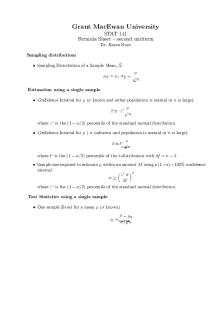
Lecture notes, lecture formula 2
- 1 Pages

2 Biodiversity - Lecture notes 2
- 33 Pages

Chapter 2 - Lecture notes 2
- 30 Pages
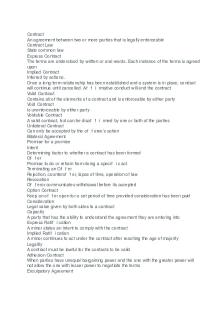
Blaw 2 - Lecture notes 2
- 4 Pages

Chapter 2 - Lecture notes 2
- 4 Pages
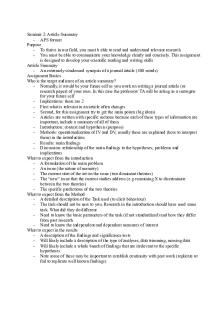
Seminar 2 - Lecture notes 2
- 2 Pages
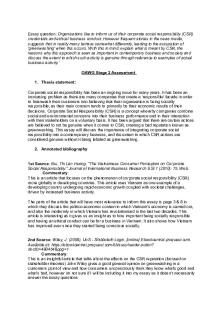
Stage 2 - Lecture notes 2
- 3 Pages
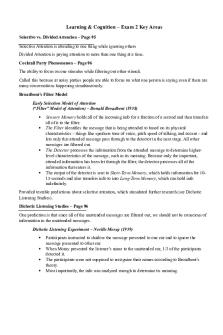
Exam 2 - Lecture notes 2
- 5 Pages

Lectia 2 - Lecture notes 2
- 3 Pages
Popular Institutions
- Tinajero National High School - Annex
- Politeknik Caltex Riau
- Yokohama City University
- SGT University
- University of Al-Qadisiyah
- Divine Word College of Vigan
- Techniek College Rotterdam
- Universidade de Santiago
- Universiti Teknologi MARA Cawangan Johor Kampus Pasir Gudang
- Poltekkes Kemenkes Yogyakarta
- Baguio City National High School
- Colegio san marcos
- preparatoria uno
- Centro de Bachillerato Tecnológico Industrial y de Servicios No. 107
- Dalian Maritime University
- Quang Trung Secondary School
- Colegio Tecnológico en Informática
- Corporación Regional de Educación Superior
- Grupo CEDVA
- Dar Al Uloom University
- Centro de Estudios Preuniversitarios de la Universidad Nacional de Ingeniería
- 上智大学
- Aakash International School, Nuna Majara
- San Felipe Neri Catholic School
- Kang Chiao International School - New Taipei City
- Misamis Occidental National High School
- Institución Educativa Escuela Normal Juan Ladrilleros
- Kolehiyo ng Pantukan
- Batanes State College
- Instituto Continental
- Sekolah Menengah Kejuruan Kesehatan Kaltara (Tarakan)
- Colegio de La Inmaculada Concepcion - Cebu


